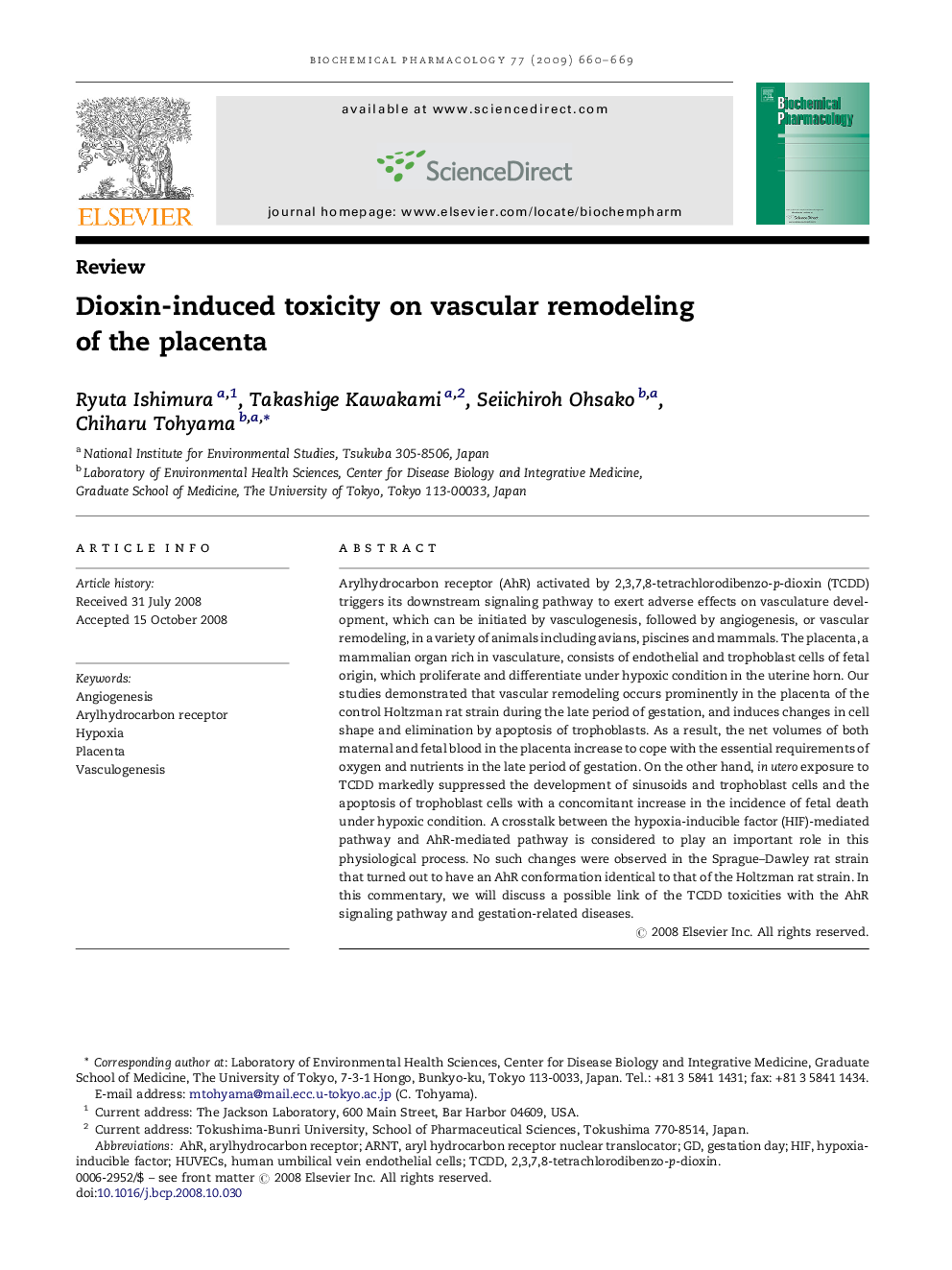| Article ID | Journal | Published Year | Pages | File Type |
|---|---|---|---|---|
| 2514491 | Biochemical Pharmacology | 2009 | 10 Pages |
Arylhydrocarbon receptor (AhR) activated by 2,3,7,8-tetrachlorodibenzo-p-dioxin (TCDD) triggers its downstream signaling pathway to exert adverse effects on vasculature development, which can be initiated by vasculogenesis, followed by angiogenesis, or vascular remodeling, in a variety of animals including avians, piscines and mammals. The placenta, a mammalian organ rich in vasculature, consists of endothelial and trophoblast cells of fetal origin, which proliferate and differentiate under hypoxic condition in the uterine horn. Our studies demonstrated that vascular remodeling occurs prominently in the placenta of the control Holtzman rat strain during the late period of gestation, and induces changes in cell shape and elimination by apoptosis of trophoblasts. As a result, the net volumes of both maternal and fetal blood in the placenta increase to cope with the essential requirements of oxygen and nutrients in the late period of gestation. On the other hand, in utero exposure to TCDD markedly suppressed the development of sinusoids and trophoblast cells and the apoptosis of trophoblast cells with a concomitant increase in the incidence of fetal death under hypoxic condition. A crosstalk between the hypoxia-inducible factor (HIF)-mediated pathway and AhR-mediated pathway is considered to play an important role in this physiological process. No such changes were observed in the Sprague–Dawley rat strain that turned out to have an AhR conformation identical to that of the Holtzman rat strain. In this commentary, we will discuss a possible link of the TCDD toxicities with the AhR signaling pathway and gestation-related diseases.
